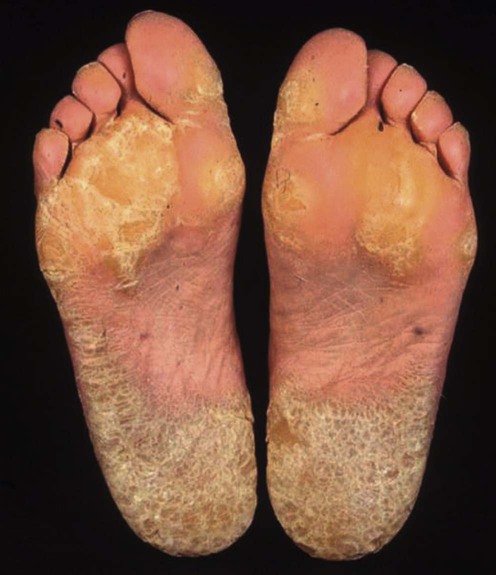Hodak E, David M, Feuerman EJ. Acta Derm Venereol 1986; 66: 354–5.
Palmoplantar keratoderma

Specific investigations
Palmoplantar keratoderma in association with myxoedema.
![]()
Stay updated, free articles. Join our Telegram channel

Full access? Get Clinical Tree




